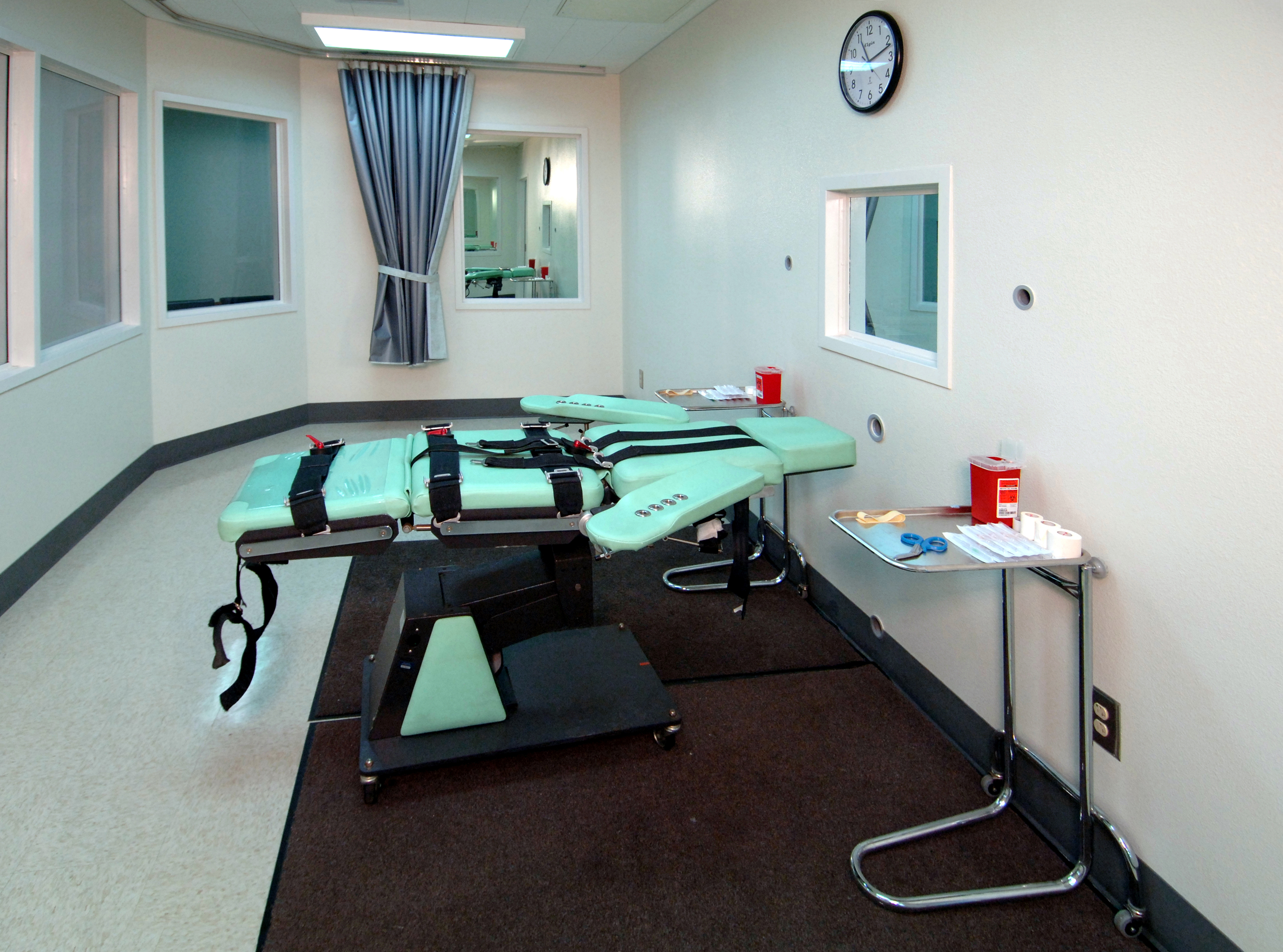Less Than Lethal Injections
By Adanya Lustig, Linguistics, 2018
“Wood repeatedly gasped for one hour and 40 minutes before death was pronounced.” (July 23, 2014)
“Lockett began breathing heavily, writhing on the gurney, clenching his teeth and straining to lift his head off the pillow. Lockett died of a heart attack 43 minutes after the execution began.” (April 29, 2014)
“Efforts to find a suitable vein and to execute Mr. Broom were terminated after more than two hours when the executioners were unable to find a useable vein in Mr. Broom’s arms or legs. During the failed efforts, Mr. Broom winced and grimaced with pain.” (Sept 15, 2009)
These are the deaths we call execution by lethal injection. The above descriptions are from an article of 46 botched executions on the death penalty information center website. Of course, those are the extremes, the mess-ups, right? Dr. David A. Lubarsky and his colleagues at the University of Miami set out in 2006 to find out.
According to their study, the problem began with Oklahoma’s first drug protocol.
“Back in 1977, when Oklahoma was the first one to reinstitute the death penalty, a pharmacist who was in the state legislature contacted the chair of anesthesia at University of Oklahoma to find out how you could kill someone with anesthesia, and the chair at that time gave him the correct recipe,” said Lubarsky on the phone. “He unfortunately put into law something that was not actually what the chair of anesthesia suggested… every single state across America merely copied the incorrect cocktail.”
This three-drug combination (sodium thiopental (also known as sodium pentothal), pancuronium bromide, and potassium chloride) is not the problem; the mistake in the legislature was regarding procedure. In theory, the thiopental is enough anesthetic so that the inmate feels no pain, and all three drugs are strong enough to kill on their own.
Lubarsky was not anti-lethal injection before the study. So, a friend and colleague of his approached him about it, and he stipulated one condition — that they publish the results no matter what they find.
“I went into this with a total open mind, and not with a preconceived notion…Frankly, I’m a Republican, sadly,” he said, laughing. “A conservative! But that doesn’t stop me in seeing the truth or the error of the ways in organizations that seem to have lost their way.”
The researchers noted that in many executions no medical personnel are present, no notes are taken, and no peer review occurs and feared that this would lead to a misdosage of anesthesia.
In order to analyze this, they looked at time to death, dosage, eyewitness accounts, heart rate, respiration rate and a variety of other metrics from several different methods of lethal injection in California and North Carolina. Their results were very straightforward. They found that about half of the patients were not sufficiently anesthetized.

“The sequence was mistimed and the drug that was being used, pentothal, is known as an ultra-short-acting barbiturate, it’s called ultra-short-acting for a reason,” said Lubarsky. “Even in very very large doses it can dissipate in effect over a period of minutes in some cases and that is what our study confirmed.”
Lubarsky’s greatest problem is with the use of muscle relaxants, such as pancuriom bromide, as they are not used in medical euthanasia or veterinary euthanasia. He remarked that the only reason the correctional facilities use them is to keep the inmates looking placid throughout the public display of death.
“Muscle relaxants basically bury you alive — no one can tell that you’re suffering,” said Lubarsky.
However, the three-drug combination they studied is not necessarily being used anymore. In many cases, pentobarbital is used as an anesthetic instead of sodium thiopental, or in single-drug procedures pentobarbital can be used alone.
This change in medication is because of a few things: cost and availability. According to the gov.uk website, the EU cannot export drugs for lethal injection as they fall under the EU Torture Regulation policy. For this reason, drugs like pentobarbital are growing scarce, so states are turning to new, untested drug combinations.
As pentobarbital became harder for states to get ahold of, it was replaced with midazolam for the first time in the case of Mr. Lockett. However, the change in drug was not necessarily the cause of his pain, according to the investigation into the execution: a misplaced IV could have been what led to the failure of the execution.
In the case of any other medical practice, these drugs could be tested and the answer to this question would be resolved, but drugs for executions cannot be tested. Furthermore, the American Medical Association instructed doctors to not have any part in an execution as it violates the Hippocratic oath.
“The AMA, the AFA, every organized medical association has said that perfecting the art of execution through the use of medicine is not a legitimate use of a physician’s knowledge,” said Lubarsky. “Our job is not to make it humane or inhumane, our job is not to be an agent of death at behest of the state.”
So, we have drugs and procedures that have never been tested, executions carried out by those with no medical background, and subjects with sometimes-difficult veins from drug use.
“There’s a legion of botched executions where people frankly they just don’t know what they’re doing — it’s not as simple as making macaroni and cheese from a Kraft box,” said Lubarksy.
Which brings us back to the hour-long deaths, gasping and groaning.
“When and if the state takes into its hands an extremely serious matter, they shouldn’t be winging it,” said Lubarsky. “They shouldn’t be experimenting, they shouldn’t be thinking maybe it’ll work and seeing how it goes on the next inmate executed. They’re essentially conducting human experimentation without appropriate oversight.”